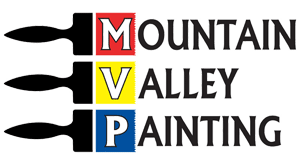When we think naps, we think of those little breaks we hated as children, but love as adults. If you have a painting project, nap means something completely different. In painting terminology, the nap refers to the length of the fibers that extend from the backing of the roller cover and carry the paint to the wall. Different naps work well on different surfaces. As a general rule, the shorter the nap, the smoother the surface you will be painting. Using a long nap on a smooth surface can leave a bumpy looking finish, while a short nap on a rough surface, will usually tear apart or leave fibers on the surface, and in the paint.
Here are some nap lengths and their common uses.
- 1/4-inch nap is for fine or smooth surfaces, such as new walls, wood doors, trim and ceilings
- 3/8-inch nap is for smooth to lightly textured walls
- 1/2-inch nap is for most walls and medium rough surfaces, such as smoother concrete or textured plaster
- 3/4-inch nap is for rough surfaces, such as highly textured walls, ceilings and concrete
- 3/8- or 1/2-inch is usually a good general-purpose roller cover
So, what length would be best?
- 9-inch roller covers fit into a 5-gallon bucket, can cover a good portion of the wall and are universal for the majority of projects
- 12-inch or longer can be somewhat heavy and hard to control, but will get the job done faster
- 6- or 7-inch are good for baseboard molding or medium furnishings, also great for tight corners or behind fixtures
- 4-inch mini roller covers are great for touch-ups, inside cabinets, small furnishings and window sills
Now you can pick the proper cover like a pro, but don’t forget the roller frame! There are many different types of roller frames or “skeletons” as well. Some rollers and frames are sold as a set for convenience, but you have more control over the quality of your supplies when you purchase them separately. Look for these optional features to get the roller that fits you perfectly.
- Select an easy-to-grip handle for your desired comfort
- If you’re spending more time on a job, perhaps an ergonomic handle might be a good choice to reduce strain on your wrist
- Quality frames use ball bearings for a smoother rolling movement, this also increases the quality of the finish
- Check for the ability to attach an extension pole to reach the tops of walls or ceilings
Getting the right tools for the job is vital. Re-applying paint after making mistakes can be time consuming and expensive. If you decide you want to skip the shopping all together, call Mountain Valley Painting for a free estimate today! 801.865.9987 You can take a nap (the best kind), we will handle the work!

